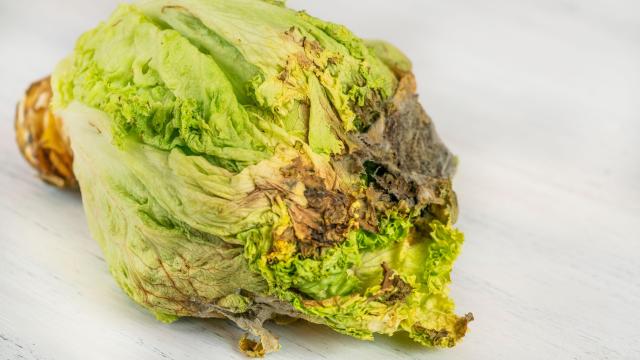If there’s one thing we can all agree on in these divisive times, it’s that food prices are too damn high. As long as you’re in the segment of the population that knows how much a gallon of milk costs, you’ve probably spent the last few years trying different strategies to stretch your grocery budget as far as it will go. And one of those strategies is recalibrating your revulsion at food that’s gone slightly off.
You can sometimes cut off the moldy parts of foods like jam and cheese and eat the rest without consequence, for example, though you’ll have a lot less success with moldy bread or tomato sauce. But produce is a different story — it’s much more delicate than processed, shelf-stable foods. When faced with brown lettuce or bruised fruit, is it OK to just trim off the “bad” spots and go about your business?
Can you eat produce after it turns brown?
A lot of produce will turn colour after a short while — we’ve all started the process of making the greatest sandwich ever conceived only to discover our lettuce has gone brown at the edges. It makes you think twice, but the good news is that browning isn’t so bad. It’s caused by oxygen interacting with enzymes in the plant, exposure to ethylene off-gassed from other produce, or being stored at a temperature that’s too low or too high. Generally speaking, unless your produce is slimy or smells bad, you can cut away the brown areas and eat the rest.
Can you eat bruised produce?
Fruit and vegetables are pretty delicate, and they get bruised easily, especially during transport to your grocery store. A bruise on produce presents as a soft spot, sometimes with a bit of wrinkling on the skin, with a mushy browned area underneath. It’s a bit gross, but you can absolutely cut out the bruise and eat the rest.
What about when produce starts to sprout?
It’s happened to the best of us: You store some vegetables for future use and by the time you go looking for them they’ve started to resemble something from The Last of Us with sprouts all over the place. Can you just snip off the sprouts and eat the rest?
Probably. Potatoes that have sprouted can indicate higher levels of substances known as glycoalkaloids, which can be dangerous. But you can usually just cut out the sprouts and eat the rest of the potato without any danger, as long as it’s firm and otherwise in good shape. But if your potatoes have turned green on the skin or flesh, be wary — this indicates a high level of solanine in the potato, which can be very dangerous, especially to children. You can slice off a small bit of green, but the safest thing to do with a green potato is to ditch it.
It’s also generally OK to eat other kinds of vegetables when they’ve sprouted. Onions, garlic, and carrots will also sprout from time to time, and it’s safe to eat them as long as the vegetable is still firm and its surface isn’t slimy or overly soft. Just carve out the sprouts and keep cooking.
Can you eat mouldy produce?
Mould is gross, but it’s tempting to just slice off mouldy sections of fruits and veggies if the rest of it looks good. The efficacy of this depends on the moisture content of the item. “Soft” fruits and vegetables (oranges and eggplant, for example) will usually have mould below the surface and possibly throughout, so once you notice mould, it’s too late to salvage. Fruits and vegetables with lower moisture content, like peppers, can have mouldy spots cut out as long as the rest of it is firm, dry, and otherwise healthy-looking.
When to not eat iffy produce
Generally speaking, it’s always going to be safer to toss food that looks suspect. But if you’re trying to be as thrifty as possible, you can often cut away bad bits. The key is to go beyond looks: The obvious signs that you can’t salvage your produce include:
- A ‘slimy’ feel and texture
- Soft and mushy consistency
- A bad smell (or, God help you, a bad taste)
If your produce exhibits these clues, just get rid of it. Otherwise, you might be able to save most of it, especially if you’re going to cook it instead of eating it raw.

Leave a Reply
You must be logged in to post a comment.